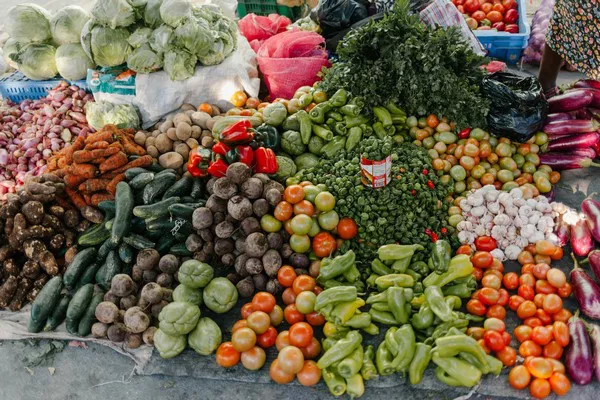Efforts to combat the pressing issue of climate change face a formidable hurdle – greenhouse gas emissions stemming from the global food system. A recent study highlights that this sector alone contributes to a staggering one-third of all human-generated emissions, underscoring the urgency of addressing our dietary habits. Notably, the study pinpoints beef and dairy consumption in swiftly developing nations like China and India as the primary culprits driving emissions within food supply chains.
In stark contrast, developed countries, where diets are already rich in animal products, have witnessed a decline in per capita emissions. However, the United Nations forecasts that feeding the projected global population of 9.1 billion by 2050 will require a staggering 70 percent increase in food production.
Published in the esteemed journal Nature Food, an international consortium of scientists led by the Universities of Groningen and Birmingham argue that the burgeoning global population and the escalating demand for emission-intensive foods threaten to exacerbate emissions further.
Professor Klaus Hubacek from the University of Groningen, a corresponding author, emphasizes, “A global shift in diets, involving reduced red meat consumption and greater reliance on plant-based proteins, not only diminishes emissions but also mitigates health risks such as obesity and cardiovascular disease.”
Dr. Yuli Shan, another corresponding author from the University of Birmingham, adds, “The agrifood system wields significant influence over global land use and agricultural activities, contributing to approximately one-third of anthropogenic greenhouse gas emissions. Population growth, expanded food production, and a surge in animal-based diets could intensify emissions and strain the global carbon budget.”
Yanxian Li, a PhD student at the University of Groningen and the study’s first author, underscores the necessity of mitigating emissions throughout the entire food supply chain. Li notes, “Efforts to limit global warming require action at every stage, from production to consumption. However, instigating widespread and lasting dietary shifts presents a formidable challenge. Incentives that encourage consumers to reduce red meat consumption or choose products with a lower environmental footprint could play a pivotal role in curbing food-related emissions.”
The study’s analysis of emissions data spanning from 2000 to 2019 reveals that in 2019, food consumption in the five highest-emitting countries – China (2.0 Gt CO2-eq), India (1.3 Gt), Indonesia (1.1 Gt), Brazil (1.0 Gt), and the USA (1.0 Gt) – accounted for over 40% of global food supply chain emissions.
Over this 20-year period, annual global greenhouse gas emissions associated with food surged by 14% (2 Gt CO2-eq). The substantial increase in the consumption of animal-based products accounted for a staggering 95% of this global emissions uptick, constituting nearly half of total food-related emissions. Beef and dairy alone contributed 32% and 46%, respectively, to the increase in global animal-based emissions.
Plant-based emissions originate predominantly from the consumption of grains (43% or 3.4 Gt CO2-eq in 2019) and oil crops (23% or 1.9 Gt CO2-eq). Of particular concern is rice, responsible for more than half of global grain-related emissions (1.7 Gt CO2-eq), with Indonesia (20%), China (18%), and India (10%) as the top three contributors.
Among oil crops, soybean (0.6 Gt CO2-eq) and palm oil (0.9 Gt CO2-eq) loom large, accounting for 30% and 46% of global emissions, respectively. Indonesia, the world’s largest palm oil consumer, leads the pack with 35% of global palm oil emissions in 2019, followed by Southeast Asia (13%), Western Europe (10%), and China (9%).
The study also unearths notable discrepancies in emissions patterns, categorizing them into four groups:
1. Countries with high per capita food emissions and predominant livestock emissions (primarily from red meat) – North America, Australia, Latin America & Caribbean.
2. Developed nations heavily reliant on imports, outsourcing substantial food-related emissions – Japan and Europe.
3. Rapidly developing countries witnessing significant emission increases due to rapid population growth or improved living standards – China, South Asia, Near East & North Africa.
4. Countries with emission-intensive production, particularly marked by extensive land-use changes – Brazil, Indonesia, and South and Central African regions.
Furthermore, the researchers shed light on trade policies that accelerate emissions by promoting food imports from regions with emission-intensive production. For instance, the EU’s Green Deal encourages less intensive agriculture in Europe while boosting imports of agricultural products from countries like Brazil, the USA, Indonesia, and Malaysia.
In conclusion, the study emphasizes the critical need for transformative action in our global food system to combat climate change effectively. Addressing the emissions associated with our dietary choices is paramount, with implications not only for the environment but also for public health and the sustainability of our planet.

